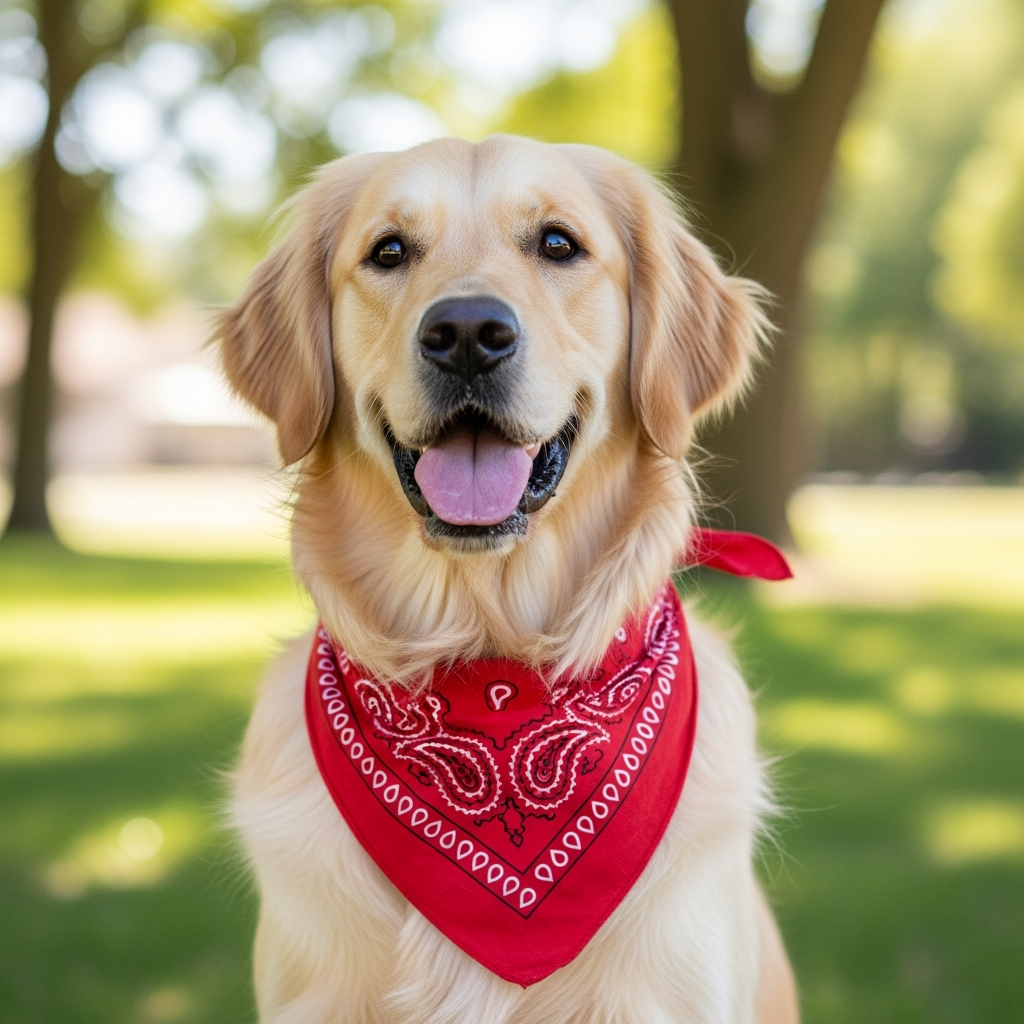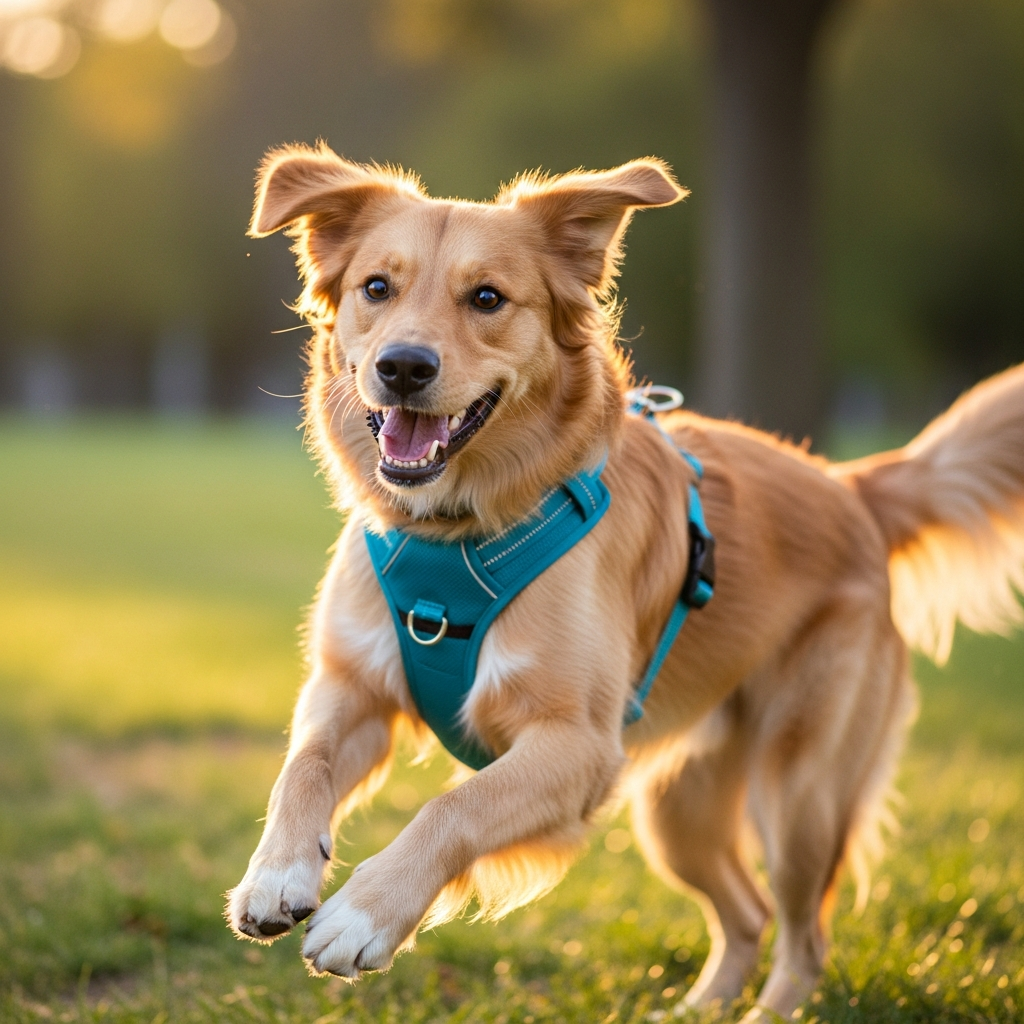A pulling dog makes walks frustrating and painful. Your arm aches, you feel out of control, and walks are no longer fun. A no-pull harness fixes this.
A no-pull dog harness works by using a front leash attachment point on the dog's chest. When your dog pulls, the dog harness gently redirects their forward momentum, turning their body back towards you. This makes pulling ineffective and uncomfortable, encouraging them to walk calmly by your side.
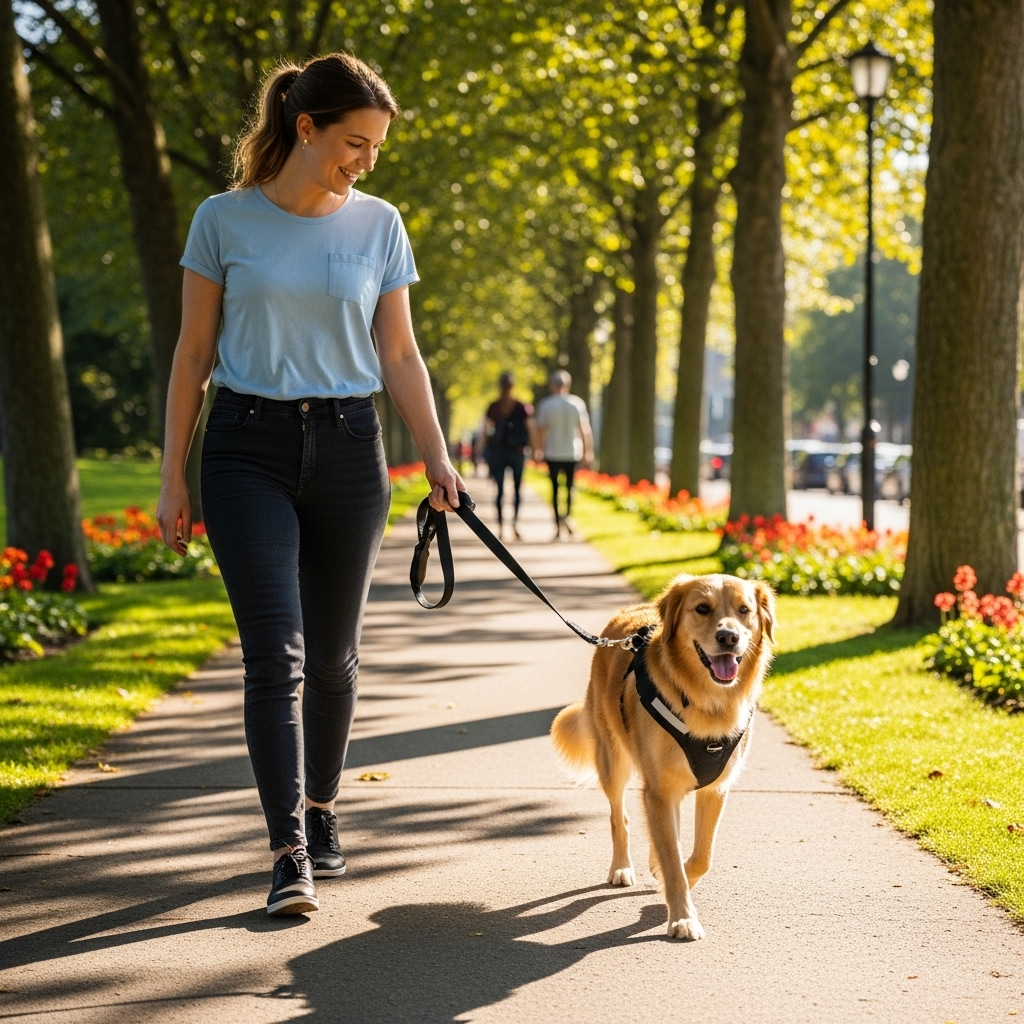
Now you know the basic idea behind how these harnesses stop pulling. But you might be wondering if they are truly effective and if there is any real science to back them up. Let's dig a little deeper to see how these simple tools can completely transform your walks and why they work so well.
Does a no-pull harness really work?
You've probably bought pet products that promised amazing results but failed to deliver. It's easy to be skeptical. But a no-pull dog harness is often the real deal.
Yes, a no-pull dog harness really works for most dogs when it is fitted correctly and used with proper technique. It is a management tool that gives you immediate control over pulling, making walks safer and more pleasant while you train your dog to walk on a loose leash.
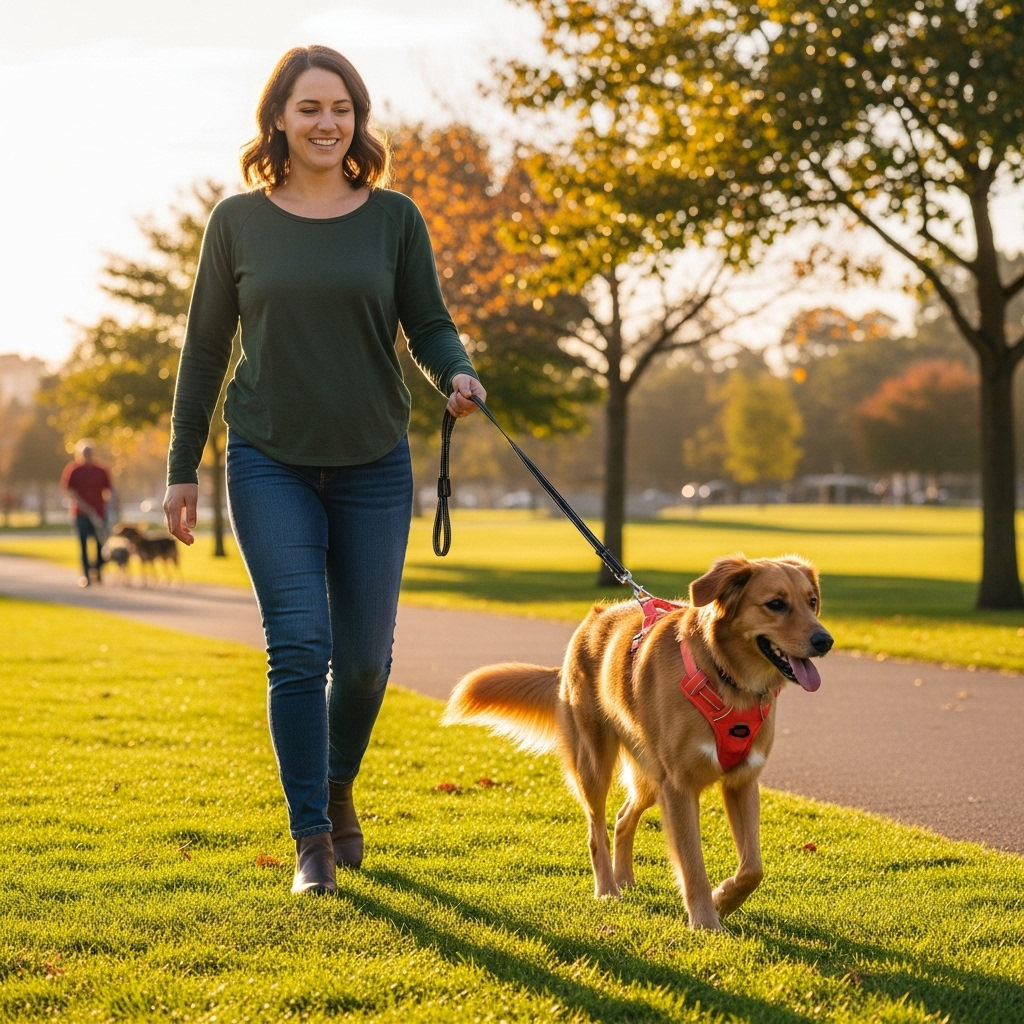
From my years designing dog gear, I've seen countless success stories. The key is to understand that the dog harness is a tool, not a magic wand. Its effectiveness depends on a few things. First, the dog's personality and pulling intensity matter. For most dogs, the effect is almost immediate. Second, you have to be consistent. Every walk is a chance to reinforce good behavior. Finally, how you use it is critical. You must keep the leash loose. If the leash is always tight, the harness can't do its job of redirecting. You are just pulling the dog from the front. The goal is to let the harness do the correcting when the dog pulls, and reward the dog when the leash is slack. When used this way, these harnesses are incredibly effective.
How does a harness stop a dog from pulling?
A strong dog pulling feels impossible to control. It's a frustrating battle of strength that you often lose. The dog harness changes the game by using physics instead of force.
It stops a dog from pulling by using a leash clip on the chest. When the dog lunges forward, the leash applies gentle pressure to their chest and shoulders, turning them sideways. This redirection makes it difficult and unrewarding for them to continue pulling forward.
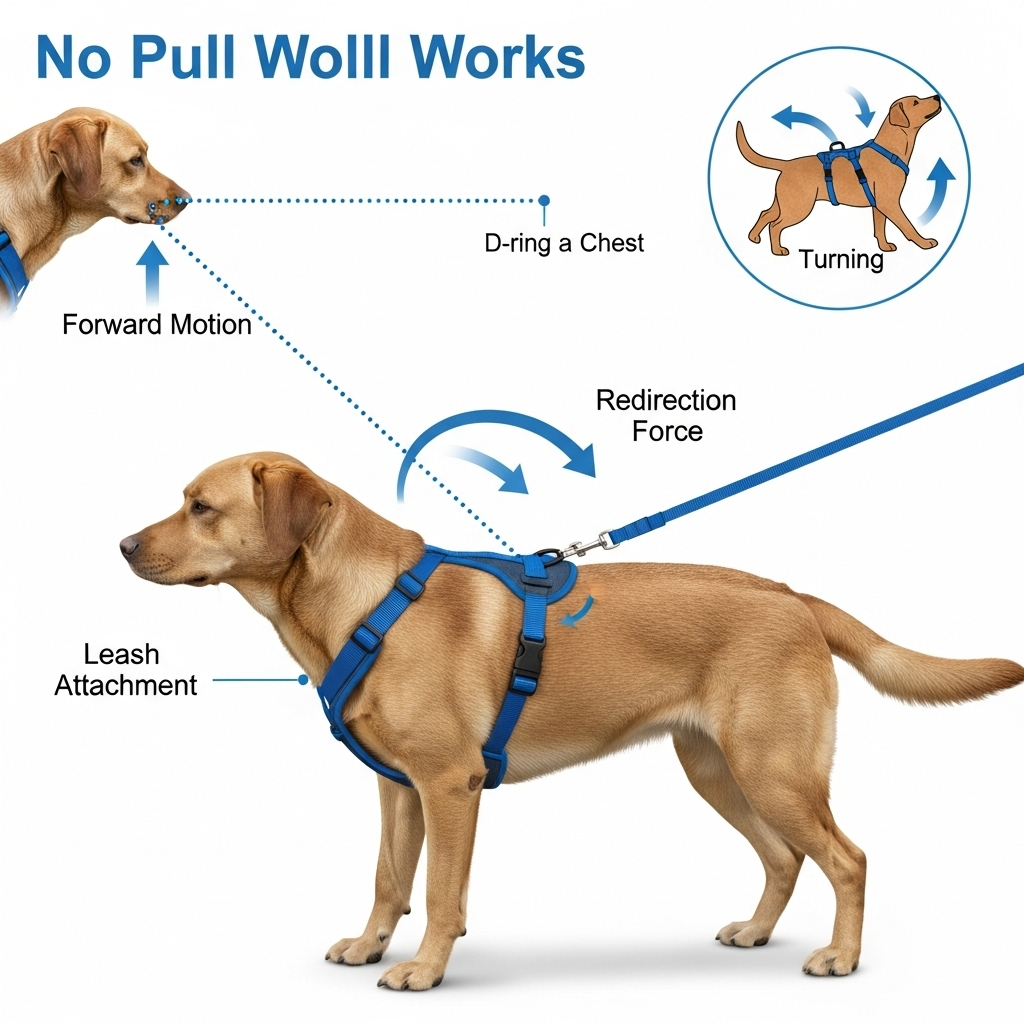
I've designed dozens of dog harnesses, and the mechanics are beautifully simple. It all comes down to the point of leverage.
The Front-Clip Mechanism
Think about steering a boat with a rudder. You don't push the boat from the back; you change its direction from a single point. The front-clip on a no-pull dog harness works the same way. It gives you control over your dog's strongest part—their chest and shoulders. When they pull, they don’t get to move forward. Instead, they just get turned back towards you. This is very different from a standard harness with a clip on the back, which can actually make pulling worse by letting the dog use their full body weight to pull against you.
Gentle Pressure, Not Pain
Good design is about solving a problem effectively and humanely. A well-designed no-pull harness should never cause pain. Unlike choke or prong collars that focus pressure on the sensitive neck, a harness distributes it across the broad, muscular chest. The pressure is gentle and is only applied when the dog pulls. The moment the leash loosens, the pressure disappears. It's a clear signal to the dog: "pulling gets me turned around, but walking calmly gets me where I want to go."
What is the science behind the no pull harness?
It seems too simple to be true. You might wonder if it's just a gimmick. But the design is based on solid principles of canine behavior and basic physics.
The science combines biomechanics and behavioral psychology. By attaching the dog leash to the front, you gain a mechanical advantage to steer the dog. This also works against their natural opposition reflex, which causes them to pull against pressure, making pulling ineffective.
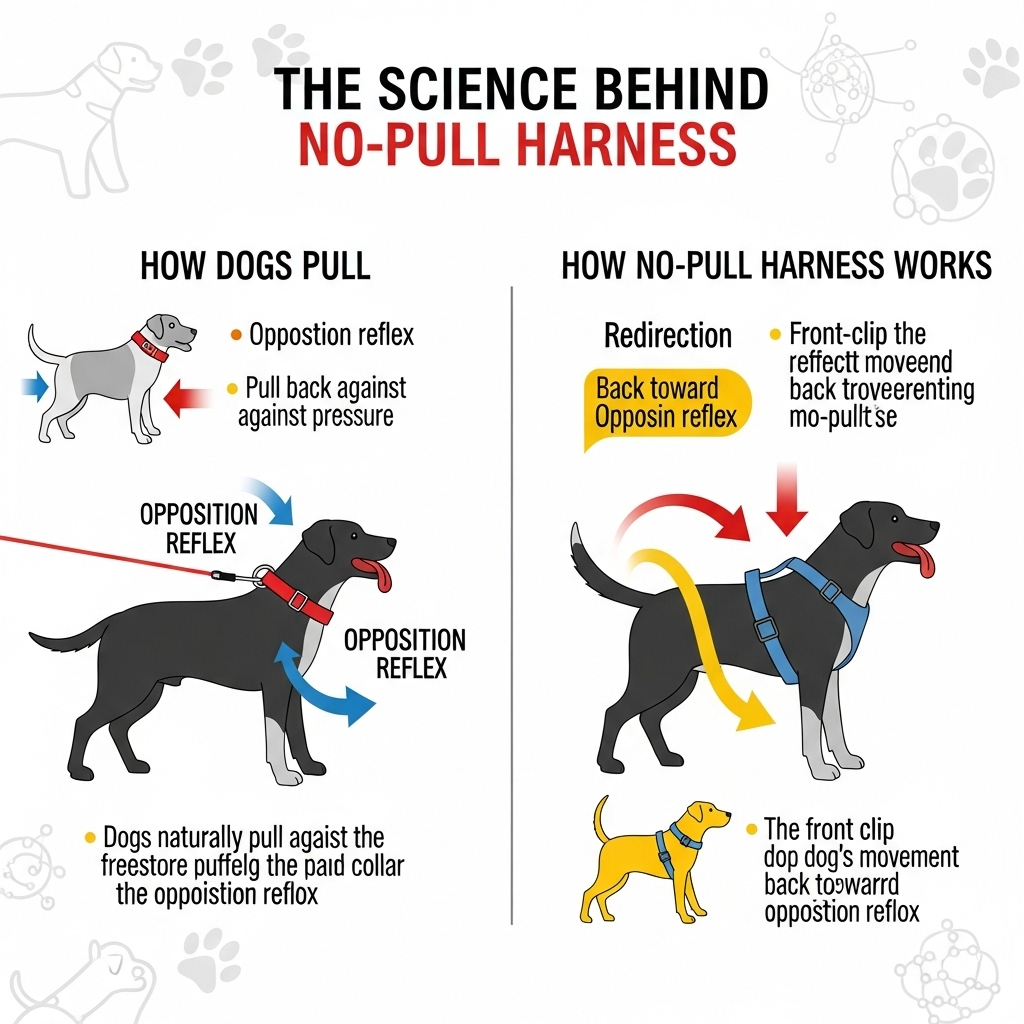
As a product developer, I always focus on designs that work with a dog's natural instincts, not against them. A no-pull dog harness is a perfect example of this philosophy in action.
Opposition Reflex
Dogs, like many animals, have a natural tendency to push against pressure. This is called the opposition reflex. When you pull back on a collar or a back-clip dog harness, their instinct is to pull forward even harder. A front-clip harness bypasses this reflex. Because the pressure comes from the front and to the side, it doesn't trigger that same forward-pulling instinct. Instead of a tug-of-war, you get a gentle turn.
Biomechanics of Movement
Controlling a dog is about controlling their center of gravity, which is around their shoulders. By steering from the chest, you can easily and safely guide their entire body. It disrupts their forward gait and makes it physically awkward for them to pull. They quickly learn that pulling doesn't get them anywhere fast. It's the most efficient way to manage a dog's movement without putting stress on their neck or spine.
What's the difference between a no pull dog harness and a regular harness?
Walking into a pet store, you see a wall of pet harnesses. They can all start to look the same. But choosing the wrong one can actually make your pulling problem worse.
The main difference is the location of the leash attachment ring. A no-pull harness has a D-ring on the front chest strap. A regular harness typically has a D-ring on the dog’s back, between the shoulder blades.
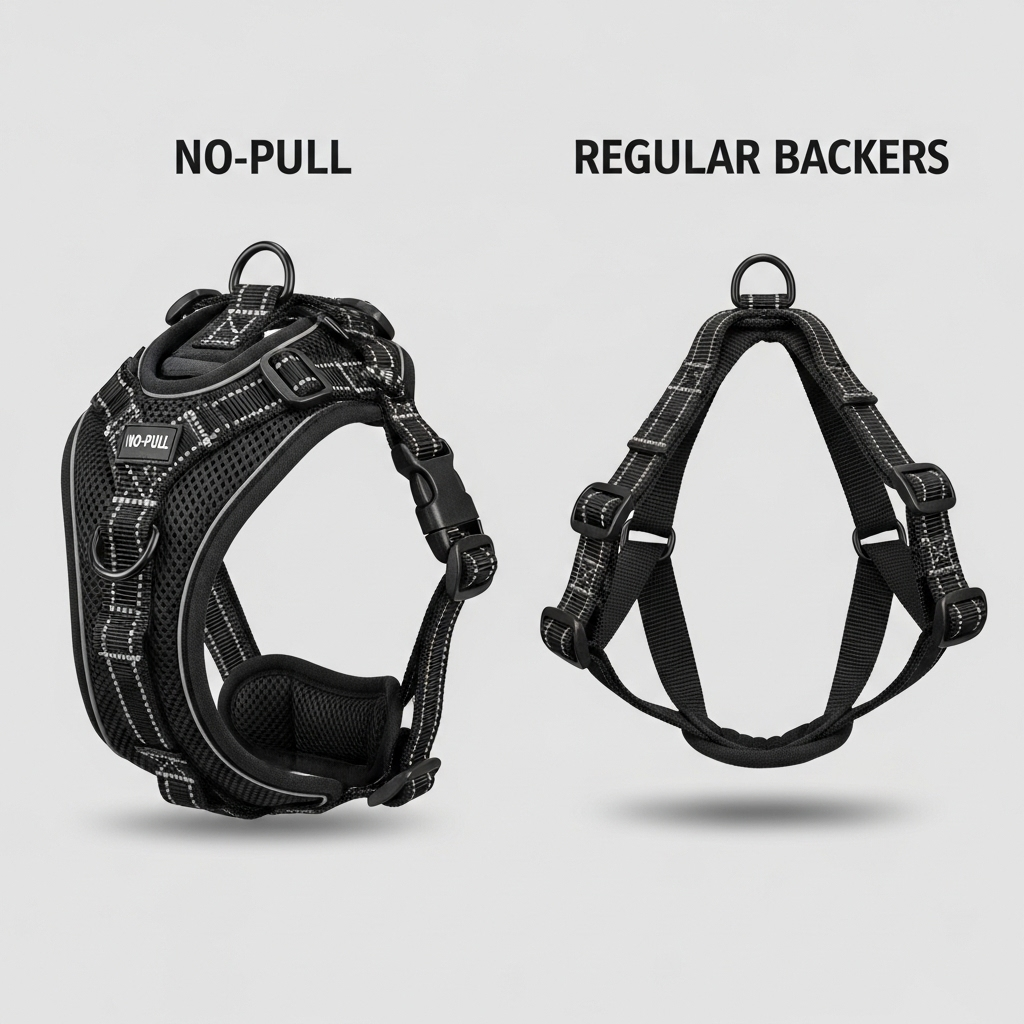
I've worked on both types of designs, and they serve very different purposes. A regular, back-clip harness is perfectly fine for dogs that are already trained to walk nicely or for activities like running where you are behind them. But for a dog that pulls, a back-clip harness is like giving them a green light. It allows them to lean in and use their full strength. A front-clip harness, however, is specifically designed to manage and correct that pulling behavior. Here’s a simple breakdown:
| Feature | No-Pull Harness (Front-Clip) | Regular Harness (Back-Clip) |
|---|---|---|
| Leash Attachment | Front, on the chest | Back, between shoulders |
| Effect on Pulling | Discourages pulling by redirection | Can encourage pulling (opposition reflex) |
| Control Level | High level of steering control | Low level of steering control |
| Best Use Case | Training dogs not to pull | Dogs that don't pull, sports |
Choosing the right tool for the job is essential. If your dog pulls, the choice is clear.
Is a no-pull dog harness enough, or do I need training too?
You bought the dog harness, and while it helps, your dog still tries to pull. It can feel like you're missing a step. That's because the harness is only half the equation.
A no-pull harness is most effective when used with reward-based training. The harness is a tool to manage the pulling, while training teaches your dog the correct behavior of walking calmly on a loose leash.
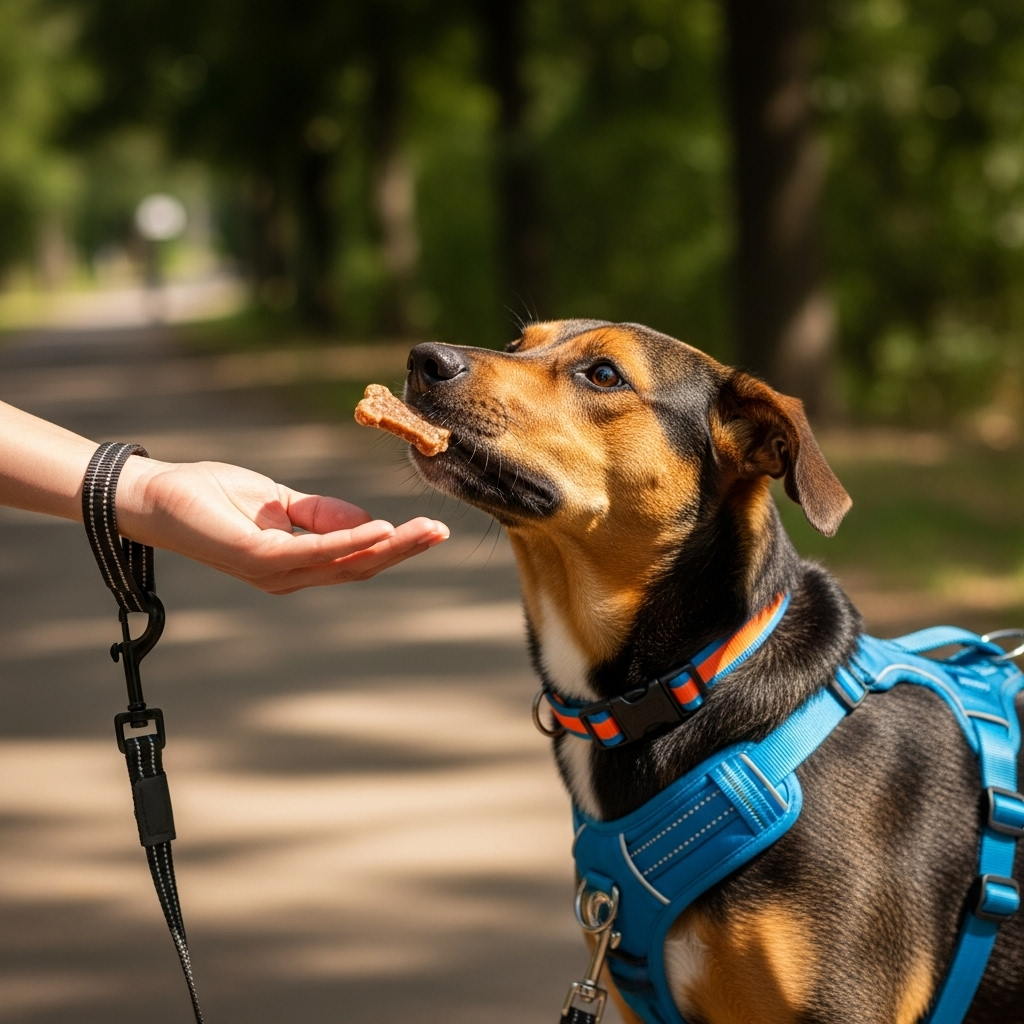
The dog harness creates an opportunity to teach your dog what you want. It stops the bad behavior (pulling), so you can reward the good behavior (walking beside you).
Mark and Reward
Here's how to do it. When your dog pulls, the harness will turn them. The leash will go slack for a second. In that exact moment, when the leash is loose and your dog is looking at you, say "Yes!" in a happy voice and give them a small, high-value treat. Your dog will quickly connect the dots: a loose leash and being near you gets them a reward. Pulling just gets them turned around. It's a powerful and positive way to communicate.
Consistency is Key
Every walk is a training session. You have to be consistent for the lesson to stick. Keep your walks short and successful at first. Give lots of praise and rewards for any bit of loose-leash walking. Over time, your dog will naturally choose to walk politely by your side because it has become a rewarding habit. The dog harness becomes less of a training tool and more of a safety backup.
Why are harness design and fit so important?
You got a harness, but it's rubbing your dog raw, or worse, they slipped right out of it. It’s a scary and frustrating moment. This happens when the design or fit is wrong.
Proper harness design and fit are critical for safety, comfort, and effectiveness. A poorly fitting harness can cause painful chafing, restrict natural movement, or allow the dog to escape, making it both dangerous and useless.
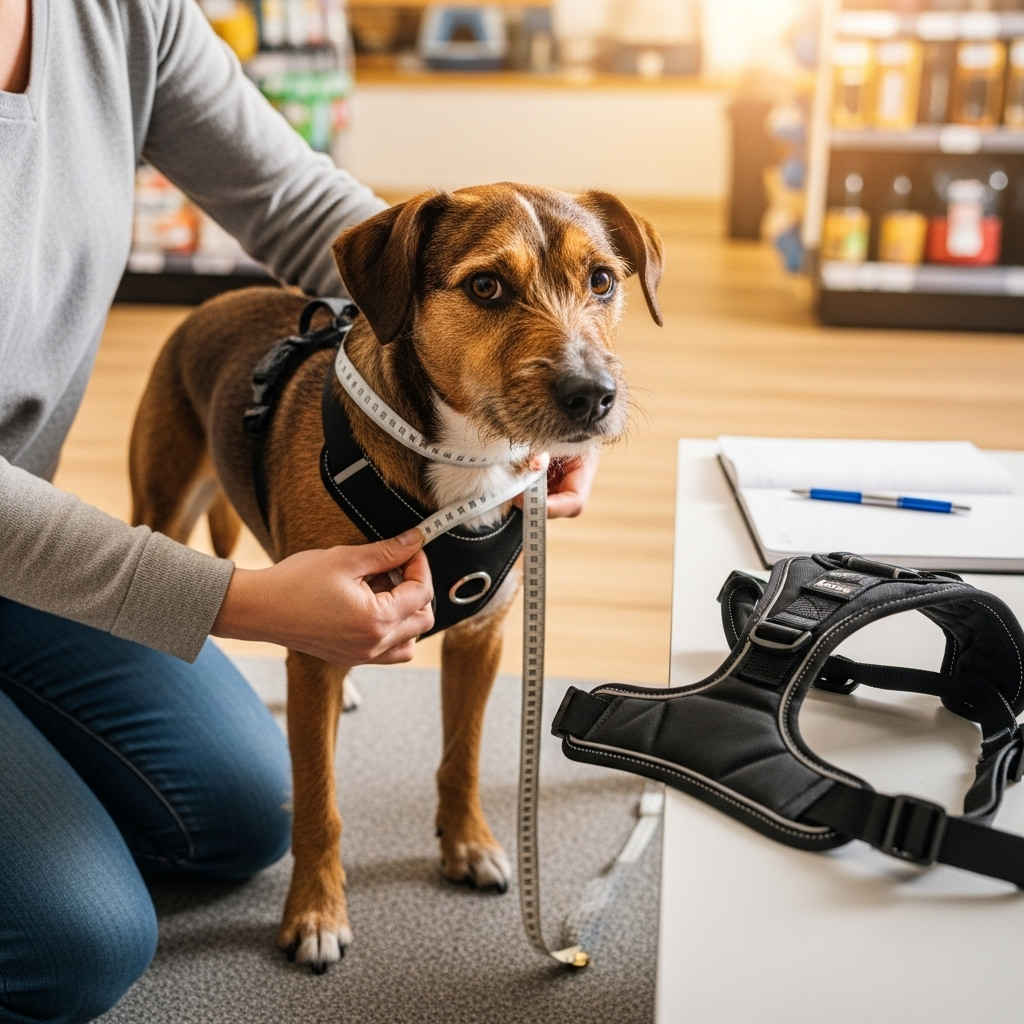
As a designer, I am obsessed with getting the details of fit and materials right. A harness is a piece of safety equipment, and there is no room for error.
Finding the Right Size
This is the most important step. I once had a client in the US, let's call him Jason, who bought a harness for his dog, Max. He guessed the size and got one that was too big. On a walk, Max got excited, lunged, and slipped right out of the dog harness, running toward the road. It was a terrifying near-miss. This story highlights why you must measure your dog. Use a soft tape measure to get the circumference of their chest at its widest point. Then, compare that measurement to the manufacturer's sizing chart. A snug fit is key—you should be able to fit two fingers between the harness and your dog, but no more.
The Importance of Materials
The materials make a huge difference in comfort and durability. Look for dog harnesses with padding in key areas, like the chest and under the legs. I often recommend materials with a neoprene lining because it's soft, breathable, and water-resistant. The webbing should be strong, tightly woven nylon, and all buckles and D-rings should be solid and secure. Check the harness regularly for any signs of fraying or damage, especially if you have a strong dog or a heavy chewer.
Conclusion
A no-pull harness is an excellent tool. It redirects your dog's pulling using a front clip, but remember that proper fit and positive training are key to success.
Cindy Long is the Sales Manager of Raysunpets and a pet lover with over 12 years of experience in exporting pet products. She specializes in providing customized dog chest carriers, leashes and pet accessory solutions for the European and American markets, always focusing on the real needs of customers and pets, and is committed to creating high-quality, practical and comfortable products that allow fur kids to live happier lives.

